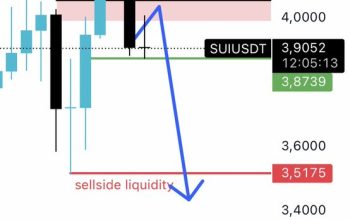Forex and Cryptocurrency Trading: Navigating the Complexities
In the fast-paced world of finance, Forex and cryptocurrency trading stand out as two of the most exhilarating and potentially rewarding avenues for investors. Whether you’re a seasoned trader or a beginner eager to explore these markets, understanding their intricacies is essential. This report will guide you through the strategies, risks, and opportunities associated with Forex and cryptocurrency trading, providing a comprehensive overview to help you navigate these dynamic markets.
The Basics of Forex Trading
What is Forex Trading?
Forex trading, or foreign exchange trading, involves the buying and selling of currencies in the global market. The Forex market is the largest and most liquid financial market in the world, with trillions of dollars traded daily. Unlike stock markets, the Forex market operates 24 hours a day, five days a week, allowing traders to capitalize on opportunities around the clock. This continuous operation makes it an attractive option for traders who want to stay active in the market at all times.
Key Strategies for Success
The Rise of Cryptocurrency Trading
What is Cryptocurrency Trading?
Cryptocurrency trading involves buying and selling digital currencies like Bitcoin, Ethereum, and Litecoin. The cryptocurrency market is known for its volatility, which presents both significant risks and opportunities. Unlike traditional currencies, cryptocurrencies are decentralized and operate on blockchain technology, making them immune to government interference and manipulation. This decentralization adds a layer of complexity and excitement to the trading process.
Strategies for Cryptocurrency Trading
Real-Time Analysis and Low-Risk, High-Return Opportunities
The Role of Real-Time Analysis
Real-time analysis is essential for both Forex and cryptocurrency trading. It allows traders to make informed decisions based on the latest market data. Advanced trading platforms and tools provide real-time charts, news feeds, and alerts, enabling traders to react quickly to market changes. Real-time analysis can help traders identify trends, spot opportunities, and make timely decisions.
Low-Risk, High-Return Strategies
The Impact of Global Events on Trading
Geopolitical Factors
Global events, such as trade wars, political instability, and economic policies, can significantly impact both Forex and cryptocurrency markets. For instance, trade tensions between major economies can lead to currency devaluation and increased volatility in the Forex market. Similarly, regulatory changes in countries like the United States and China can affect the price of cryptocurrencies. Understanding these geopolitical factors can help traders make more informed decisions.
Economic Indicators
Economic indicators, such as GDP growth, inflation rates, and employment data, are crucial for Forex traders. These indicators provide insights into the economic health of a country, which can influence currency values. For cryptocurrency traders, economic stability can impact the demand for digital currencies as a hedge against inflation and economic uncertainty. Keeping an eye on these economic indicators can help traders anticipate market movements and make more informed decisions.
The Future of Trading: AI and Intelligent Systems
AI in Trading
Artificial Intelligence (AI) is revolutionizing the trading landscape. AI-driven trading systems can analyze vast amounts of data, identify patterns, and execute trades faster than human traders. These systems can also adapt to changing market conditions, providing a competitive edge. AI can help traders make more accurate predictions and execute trades more efficiently.
Intelligent Trading Systems
Intelligent trading systems, like the Snowball AI system, integrate deep learning models with multidimensional technical analysis to realize intelligent arbitrage in the cryptocurrency market. These systems can identify and exploit price discrepancies across different exchanges, providing low-risk, high-return opportunities. Intelligent trading systems can help traders capitalize on market inefficiencies and maximize their returns.
Conclusion: Embracing the Future of Trading
The world of Forex and cryptocurrency trading is complex and ever-changing. However, with the right strategies, tools, and knowledge, it is possible to navigate these markets successfully. Real-time analysis, effective risk management, and leveraging AI-driven systems can provide a significant advantage. As the financial landscape continues to evolve, embracing these technologies and strategies will be crucial for traders looking to capitalize on the opportunities presented by Forex and cryptocurrency markets. The future of trading is here, and those who adapt and innovate will be the ones to reap the rewards.
References




